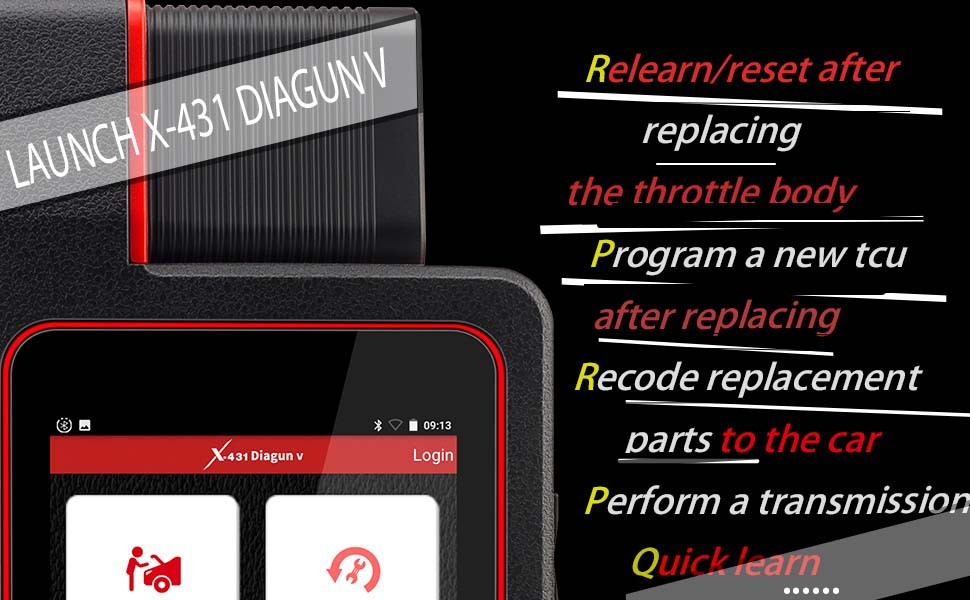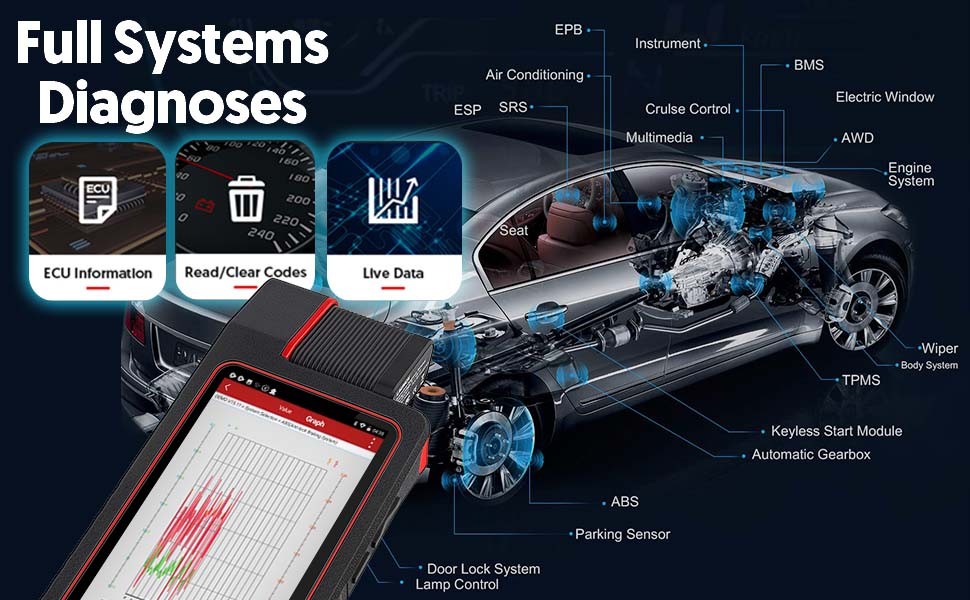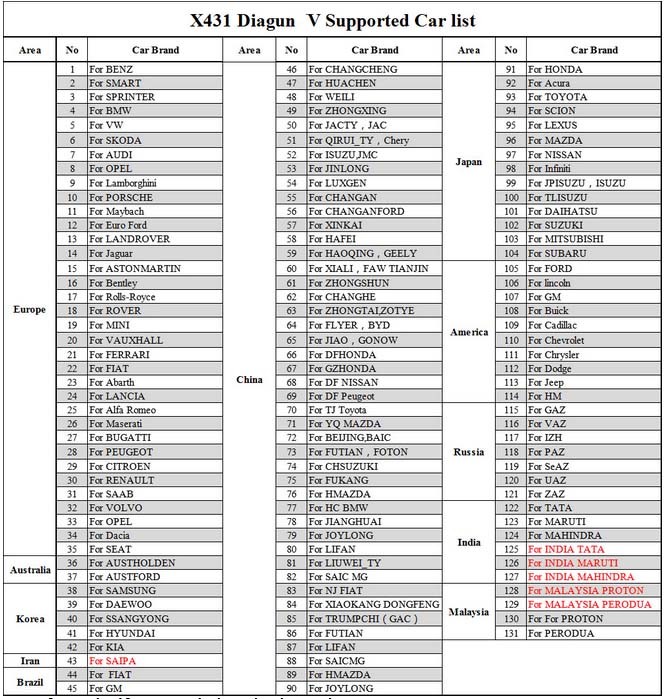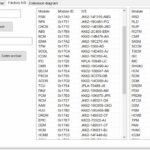Can Vediamo access and clear crash data stored in various modules, and not just the Supplementary Restraint System (SRS)? It depends on the Electronic Control Unit (ECU) implementation, but DTS-MONACO.EDU.VN provides you with the knowledge and tools to explore these capabilities. Master advanced diagnostics and car coding techniques to tackle complex automotive challenges. Discover deeper insights into module data and unlock powerful diagnostic potential.
Contents
- 1. Understanding Crash Data and ECU Modules
- 2. Vediamo’s Capabilities: A Deep Dive
- 3. Can Vediamo Access Crash Data in Modules Beyond SRS?
- 4. Understanding ECU Implementation: The Key to Access
- 5. Step-by-Step Guide: Accessing Crash Data with Vediamo
- 6. Safety Precautions and Ethical Considerations
- 7. Common Challenges and Troubleshooting Tips
- 8. Case Studies: Real-World Examples of Crash Data Analysis
- 9. The Role of DTS-MONACO.EDU.VN in Mastering Vediamo and Car Coding
- 10. Maximizing Your Diagnostic Capabilities with DTS-MONACO.EDU.VN
- 11. The Future of Crash Data and Automotive Diagnostics
- 12. FAQ: Frequently Asked Questions About Vediamo and Crash Data
- Conclusion: Empowering Automotive Technicians with Knowledge and Skills
1. Understanding Crash Data and ECU Modules
Crash data, also known as event data, is crucial information recorded by a vehicle’s electronic systems during a collision. This data can provide insights into the severity of the crash, vehicle speed, and system performance.
-
What is Crash Data? Crash data consists of various parameters captured by vehicle sensors before, during, and after a collision. These parameters may include vehicle speed, braking status, airbag deployment, seatbelt usage, and more.
-
Why is Crash Data Important? Crash data is valuable for accident reconstruction, insurance claims, and understanding vehicle safety system performance. Automotive technicians also use crash data to diagnose and repair vehicles after an accident.
-
Which ECUs Store Crash Data? While the SRS (airbag control unit) is the primary storage location for crash data, other ECUs may also store related information. Engine control units (ECUs), transmission control units (TCUs), and anti-lock braking systems (ABS) might record data relevant to the crash event, depending on the vehicle’s design and ECU implementation.
2. Vediamo’s Capabilities: A Deep Dive
Vediamo is a powerful diagnostic and car coding software commonly used for Mercedes-Benz vehicles. It allows technicians to access and modify various ECU parameters.
-
What is Vediamo? Vediamo is a diagnostic software application used for in-depth analysis and programming of automotive ECUs. It offers extensive capabilities for reading, writing, and manipulating ECU data.
-
Key Functions of Vediamo: Vediamo allows users to read diagnostic trouble codes (DTCs), access live data, perform calibrations, and execute software updates. Its advanced coding functions enable customization and modification of vehicle behavior.
-
Vediamo’s Relevance to Crash Data: Vediamo can access and clear crash data stored in various modules, not only the SRS module. However, this capability is dependent on the specific ECU implementation and the level of access granted by the vehicle manufacturer.
3. Can Vediamo Access Crash Data in Modules Beyond SRS?
The central question is whether Vediamo can reach beyond the SRS module for crash data. The answer lies in ECU implementation details.
-
The Straight Answer: Yes, Vediamo has the potential to access and clear crash data stored in modules beyond the SRS, depending on the vehicle’s ECU setup.
-
Factors Determining Access: Several factors determine Vediamo’s access capabilities:
- ECU Design: The design of the ECU dictates whether it stores crash-related data.
- Data Storage Strategy: The vehicle’s data storage strategy determines which modules record specific crash parameters.
- Manufacturer Restrictions: Vehicle manufacturers may impose restrictions on accessing certain data for security or proprietary reasons.
-
Examples of Modules with Potential Crash Data:
- Engine Control Unit (ECU): May store data on engine speed, throttle position, and other performance parameters during the crash.
- Transmission Control Unit (TCU): Could record gear selection and transmission behavior during the event.
- Anti-lock Braking System (ABS): Might contain data related to braking force and wheel speed.
- Body Control Module (BCM): May store data related to lighting, door locks, and other body functions during the crash.
 Vehicle ECU Connections
Vehicle ECU Connections
4. Understanding ECU Implementation: The Key to Access
The ability to access and clear crash data hinges on understanding the specific ECU implementation in the vehicle.
-
What is ECU Implementation? ECU implementation refers to the way the vehicle manufacturer designs and configures the electronic control units in a vehicle. This includes the type of data stored, the communication protocols used, and the security measures implemented.
-
How ECU Implementation Affects Access: If the ECU is designed to store crash-related data and allows access via diagnostic tools like Vediamo, then technicians can retrieve and clear the data. However, if the manufacturer restricts access or does not store the data in a readily accessible format, it may not be possible to use Vediamo for this purpose.
-
Research and Documentation: Accessing specific crash data often requires consulting vehicle-specific repair manuals, technical documentation, and wiring diagrams. These resources provide valuable information on ECU locations, data storage, and communication protocols.
5. Step-by-Step Guide: Accessing Crash Data with Vediamo
Here’s a general guide on how to access crash data using Vediamo, keeping in mind that the exact steps may vary based on the vehicle model and ECU configuration.
-
Connect Vediamo to the Vehicle:
- Connect the Vediamo interface to the vehicle’s OBD-II port.
- Ensure a stable connection and proper power supply.
-
Establish Communication with the ECU:
- Launch the Vediamo software on your computer.
- Select the appropriate vehicle model and ECU.
- Establish a communication link with the target ECU.
-
Read Diagnostic Trouble Codes (DTCs):
- Use Vediamo to read DTCs from the ECU.
- Note any crash-related codes, such as those related to airbag deployment or sensor failures.
-
Access Data Streams:
- Navigate to the data stream section of Vediamo.
- Look for relevant parameters, such as vehicle speed, acceleration, and sensor readings.
- Record any unusual or out-of-range values that may indicate crash data.
-
Perform Special Functions:
- Check for special functions related to crash data or event recording.
- These functions may allow you to access and clear crash data stored in the ECU.
-
Clear Crash Data:
- If Vediamo provides an option to clear crash data, use it with caution.
- Make sure you understand the implications of clearing this data and have the necessary permissions.
-
Verify the Results:
- After clearing the data, re-read DTCs and data streams to ensure the crash data has been successfully removed.
- Test the vehicle to confirm that all systems are functioning correctly.
 Vediamo Diagnostic Interface
Vediamo Diagnostic Interface
6. Safety Precautions and Ethical Considerations
Working with crash data requires a high level of responsibility. Here are some crucial safety precautions and ethical considerations.
-
Safety First:
- Always disconnect the vehicle’s battery before working on the SRS system.
- Follow proper grounding procedures to prevent electrical shock.
- Wear appropriate personal protective equipment (PPE), such as gloves and safety glasses.
-
Data Privacy:
- Respect the privacy of vehicle owners and their data.
- Obtain proper authorization before accessing or clearing crash data.
- Comply with all applicable data protection laws and regulations.
-
Accuracy and Integrity:
- Ensure the accuracy and integrity of crash data.
- Do not tamper with or manipulate the data in any way that could compromise its validity.
- Use the data responsibly and ethically in accident reconstruction and vehicle repair.
7. Common Challenges and Troubleshooting Tips
Accessing and clearing crash data can be challenging. Here are some common issues and tips to overcome them.
-
Communication Errors:
- Ensure the Vediamo interface is properly connected to the vehicle.
- Verify the communication settings in the Vediamo software.
- Check for any conflicting devices or software on your computer.
-
Limited Access:
- Some ECUs may have restricted access to crash data.
- Consult vehicle-specific documentation for information on accessing protected data.
- Consider using alternative diagnostic tools or methods if Vediamo cannot access the required data.
-
Data Interpretation:
- Crash data can be complex and difficult to interpret.
- Refer to vehicle-specific repair manuals and technical resources for guidance.
- Seek assistance from experienced technicians or specialists if needed.
-
Software Compatibility:
- Ensure you are using the latest version of Vediamo and that it is compatible with the vehicle model you are working on.
- Check for any software updates or patches that may address known issues.
8. Case Studies: Real-World Examples of Crash Data Analysis
Let’s explore some real-world examples of how Vediamo can be used to analyze crash data in different scenarios.
-
Case Study 1: Airbag Deployment Failure
- Scenario: A vehicle’s airbags failed to deploy in a moderate-speed collision.
- Vediamo Analysis: Technicians used Vediamo to access the SRS module and found a faulty sensor reading. They replaced the sensor and verified the airbag system’s functionality.
- Outcome: The airbags deployed correctly in a subsequent test, preventing potential injuries in future collisions.
-
Case Study 2: ABS Malfunction During a Crash
- Scenario: A vehicle experienced ABS malfunction during a crash, leading to extended stopping distance.
- Vediamo Analysis: Technicians used Vediamo to access the ABS module and found a corrupted data file. They re-flashed the ABS module with the correct software and verified its performance.
- Outcome: The ABS system functioned properly in subsequent tests, improving vehicle safety and control.
-
Case Study 3: Engine Stall After Impact
- Scenario: A vehicle’s engine stalled immediately after a collision.
- Vediamo Analysis: Technicians used Vediamo to access the ECU and found a fuel cutoff signal was prematurely activated. They adjusted the ECU parameters to prevent the engine from stalling during low-speed impacts.
- Outcome: The engine continued to run after low-speed impacts, reducing the risk of secondary collisions.
9. The Role of DTS-MONACO.EDU.VN in Mastering Vediamo and Car Coding
DTS-MONACO.EDU.VN provides comprehensive training and resources for mastering Vediamo and car coding techniques.
-
Comprehensive Training Programs: DTS-MONACO.EDU.VN offers a range of training programs designed to equip technicians with the knowledge and skills needed to excel in automotive diagnostics and car coding. These programs cover everything from basic concepts to advanced techniques.
-
Expert Instructors: The instructors at DTS-MONACO.EDU.VN are experienced professionals with extensive knowledge of Vediamo and car coding. They provide hands-on training and personalized guidance to help students succeed.
-
Up-to-Date Curriculum: DTS-MONACO.EDU.VN’s curriculum is constantly updated to reflect the latest advancements in automotive technology. Students learn about the newest diagnostic tools, coding techniques, and vehicle systems.
-
Hands-On Experience: DTS-MONACO.EDU.VN provides students with opportunities to work on real vehicles and practice their skills using Vediamo and other diagnostic tools. This hands-on experience is essential for developing proficiency and confidence.
-
Certification: Upon completion of the training programs, students receive certification that validates their knowledge and skills. This certification can help them advance their careers and demonstrate their expertise to employers and customers.
 DTS-Monaco Software Interface
DTS-Monaco Software Interface
10. Maximizing Your Diagnostic Capabilities with DTS-MONACO.EDU.VN
By leveraging the resources and training programs offered by DTS-MONACO.EDU.VN, technicians can maximize their diagnostic capabilities and provide superior service to their customers.
-
Enhanced Diagnostic Accuracy: The training programs at DTS-MONACO.EDU.VN help technicians improve their diagnostic accuracy by teaching them how to use Vediamo and other tools effectively. They learn how to identify and resolve complex issues that may be missed by less skilled technicians.
-
Increased Efficiency: With the knowledge and skills gained from DTS-MONACO.EDU.VN, technicians can perform diagnostic procedures more efficiently, saving time and money. They learn how to quickly access and interpret data, identify root causes, and implement effective solutions.
-
Expanded Service Offerings: DTS-MONACO.EDU.VN enables technicians to expand their service offerings by providing them with the ability to perform car coding and customization. This can attract new customers and increase revenue.
-
Improved Customer Satisfaction: By providing superior diagnostic and repair services, technicians can improve customer satisfaction and build long-term relationships. Customers appreciate accurate diagnoses, efficient repairs, and personalized service.
-
Career Advancement: Certification from DTS-MONACO.EDU.VN can help technicians advance their careers by demonstrating their expertise and commitment to professional development. They may be able to command higher salaries and take on more challenging roles.
11. The Future of Crash Data and Automotive Diagnostics
The field of automotive diagnostics is constantly evolving, with new technologies and techniques emerging all the time.
-
Increased Data Availability: As vehicles become more connected and sophisticated, the amount of available crash data will continue to increase. This will provide technicians with more information to diagnose and repair vehicles accurately.
-
Advanced Diagnostic Tools: Diagnostic tools like Vediamo will become more powerful and user-friendly. They will offer advanced features such as automated data analysis, remote diagnostics, and artificial intelligence-based troubleshooting.
-
Remote Diagnostics: Remote diagnostics will become more prevalent, allowing technicians to diagnose and repair vehicles from anywhere in the world. This will improve efficiency and reduce downtime.
-
Cybersecurity: Cybersecurity will become an increasingly important consideration in automotive diagnostics. Technicians will need to be aware of potential security vulnerabilities and take steps to protect vehicle data from unauthorized access.
-
Standardization: Efforts to standardize crash data formats and protocols will continue, making it easier for technicians to access and interpret data from different vehicle makes and models.
12. FAQ: Frequently Asked Questions About Vediamo and Crash Data
Here are some frequently asked questions about Vediamo and crash data, along with detailed answers.
-
Is Vediamo difficult to learn?
- While Vediamo has a steep learning curve, DTS-MONACO.EDU.VN offers comprehensive training programs to help technicians master the software.
-
Can Vediamo be used on all vehicle makes and models?
- Vediamo is primarily designed for Mercedes-Benz vehicles, but it may also be compatible with other makes and models.
-
Is it legal to clear crash data from a vehicle?
- Clearing crash data may be subject to legal restrictions in some jurisdictions. Consult with legal counsel to ensure compliance.
-
What are the ethical considerations when working with crash data?
- Technicians should respect data privacy, ensure data accuracy, and use the data responsibly in accident reconstruction and vehicle repair.
-
How often should Vediamo be updated?
- Vediamo should be updated regularly to ensure compatibility with the latest vehicle models and to access the latest features and bug fixes.
-
What are the system requirements for running Vediamo?
- Vediamo requires a computer with a Windows operating system, a stable internet connection, and sufficient processing power and memory.
-
Can Vediamo be used for car coding and customization?
- Yes, Vediamo offers advanced coding functions that enable customization and modification of vehicle behavior.
-
What types of training programs are offered by DTS-MONACO.EDU.VN?
- DTS-MONACO.EDU.VN offers a range of training programs covering basic concepts, advanced techniques, and hands-on experience with Vediamo and other diagnostic tools.
-
How can I obtain certification from DTS-MONACO.EDU.VN?
- Certification is awarded upon completion of the training programs and successful demonstration of knowledge and skills.
-
Where can I get support if I encounter problems using Vediamo?
- DTS-MONACO.EDU.VN provides technical support to its students and customers. You can also consult online forums and communities for assistance.
Conclusion: Empowering Automotive Technicians with Knowledge and Skills
In conclusion, while Vediamo’s ability to access and clear crash data beyond the SRS depends on ECU implementation, understanding these nuances empowers technicians to perform advanced diagnostics. DTS-MONACO.EDU.VN is your partner in mastering Vediamo and unlocking the full potential of car coding.
Ready to elevate your automotive diagnostic skills?
Visit DTS-MONACO.EDU.VN today to explore our comprehensive training programs, expert instructors, and up-to-date curriculum. Gain the knowledge and hands-on experience you need to excel in automotive diagnostics and car coding. Contact us at Address: 275 N Harrison St, Chandler, AZ 85225, United States. Whatsapp: +1 (641) 206-8880. Let DTS-MONACO.EDU.VN be your guide to success in the rapidly evolving world of automotive technology.
